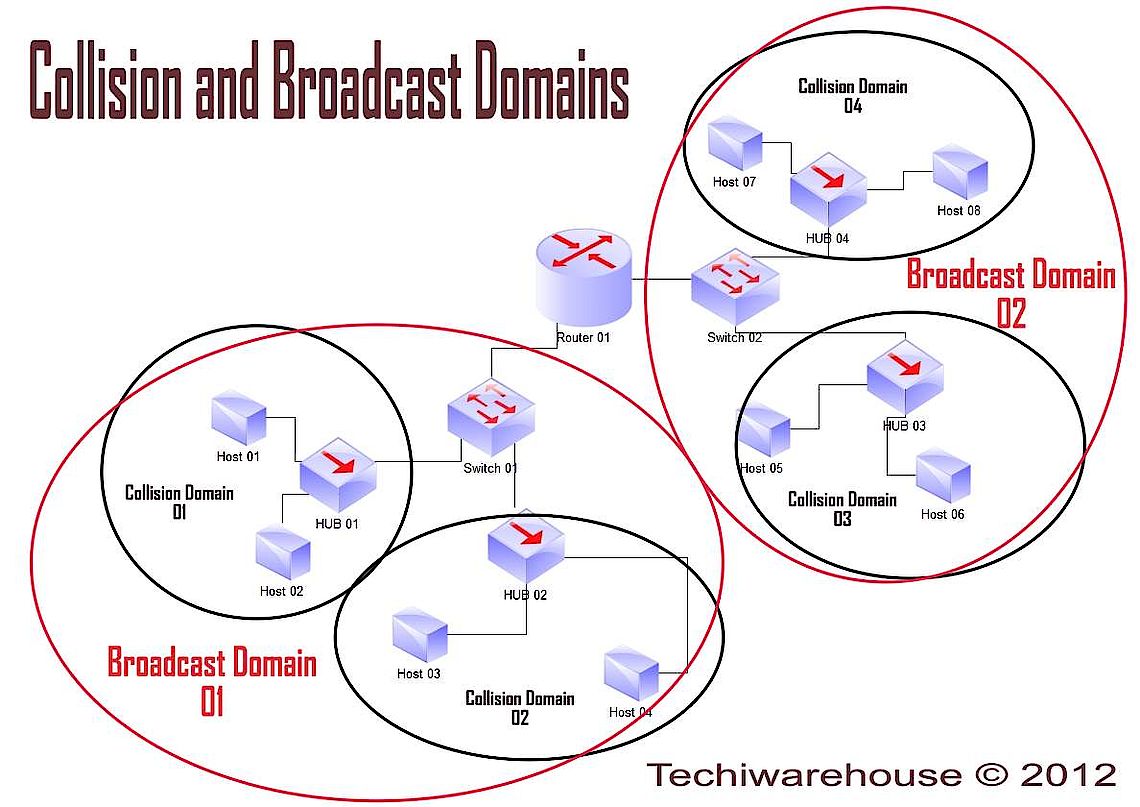A collision domain is a section of a network connected by a shared medium or through repeaters where data packets can collide with one another when being sent, particularly when using early versions of Ethernet. A network collision occurs when more than one device attempts to send a packet on a network segment at the same time.
Only one device in the collision domain may transmit at any one time, and the other devices in the domain listen to the network in order to avoid data collisions. Because only one device may be transmitting at any one time, total network bandwidth is shared among all devices. Collisions also decrease network efficiency on a collision domain; if two devices transmit simultaneously, a collision occurs, and both devices have to abort transmission and must retransmit at a later time.
Since data bits are propagated at a finite speed, simultaneously is to be defined in terms of the size of the collision domain and the minimum packet size allowed. A smaller packet size or a larger dimension would make it possible for a sender to finish sending the packet without the first bits of the message being able to reach the most remote node. So, that node could start sending as well, without a clue to the transmission already taking place and destroying the first packet. Unless the size of the collision domain allows the initial sender to receive the second transmission attempt – the collision – within the time it takes to send the packet he would neither be able to detect the collision nor to repeat the transmission – this is called a late collision.
Ethernet
On wired Ethernet, collisions are resolved using carrier sense multiple access with collision detection (CSMA/CD) in which the competing packets are discarded and re-sent one at a time. This becomes a source of inefficiency in the network.
Collision domains are found in a hub or repeater environment where each host segment connects to a hub that represents only one collision domain within one broadcast domain. Collision domains are also found in other shared medium networks, e. g. wireless networks such as Wi-Fi.
Modern wired networks use a network switch to eliminate collisions. By connecting each device directly to a port on the switch, either each port on a switch becomes its own collision domain (in the case of half duplex links) or the possibility of collisions is eliminated entirely in the case of full duplex links.

